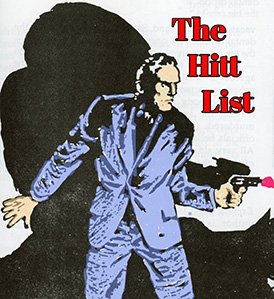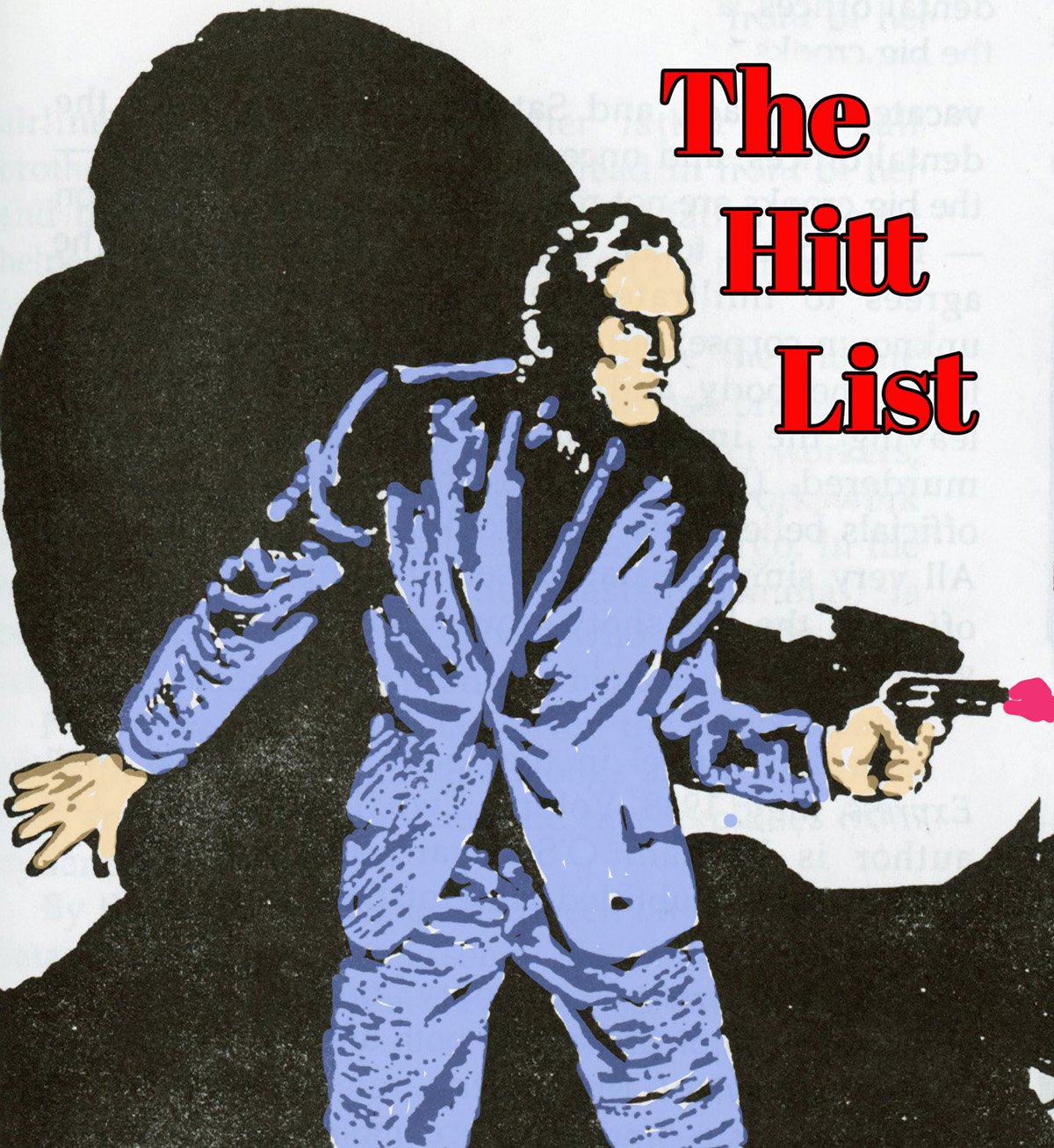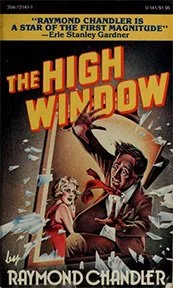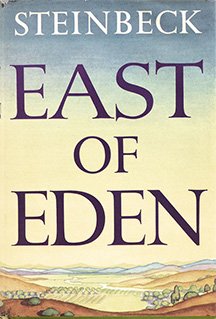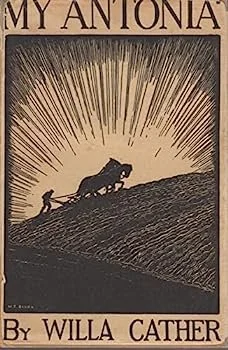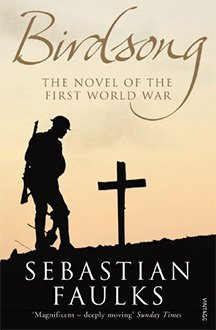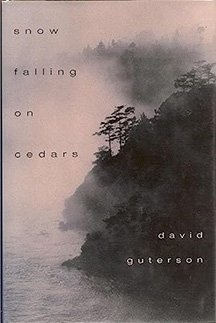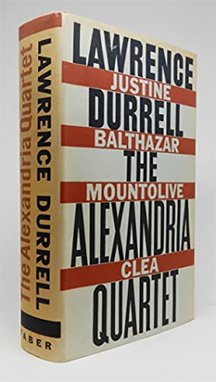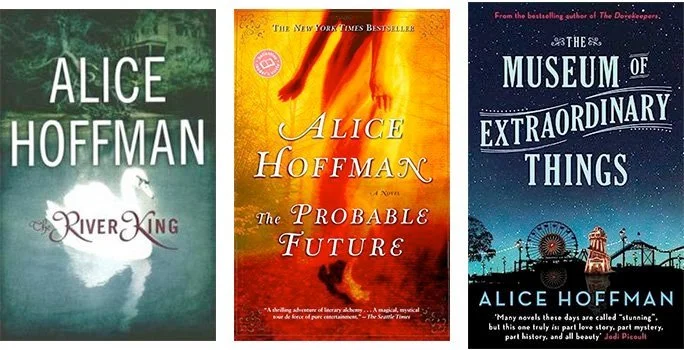LITERARY MUSINGS
September 1, 2023
GOOD EGGS—
HARD BOILED, SLIGHTLY CRACKED:
RAYMOND CHANDLER IN FILM
Part 1
A revised three-part series on novelist Raymond Chandler
and his turbulent, boozy, historic years in Hollywood.
BY
MARK LENTINE
Raymond Chandler
“Hollywood is wonderful. Anyone who doesn’t like it is either crazy…or sober.”
“If my books had been any worse I should not have been invited to Hollywood and if they had been any better I should not have come."
"Hollywood has all the personality of a paper cup.”
I may have the distinction of being the only person ever to have been beaten by a Raymond Chandler book.
Blame my mother; she was late.
Louise Lentine was one of a score of “public service representatives” working at the old Bell Telephone Company in Center City Philadelphia. Today was a treat; dad was away, so I could take the bus to center city and meet mom for dinner. I was 11 years old.
In 1972, 11 year-olds could safely take the bus miles away to meet their moms for dinner…and their mother’s had a reasonable expectation that they would arrive intact, which I did. But mom asked me to wait, as she was helping two final customers.
Now what could I do for a half-hour or so?
The book department at Gimbels!!
Books and books about movies . This was ’72; no VHS tapes yet.
And then it happened. A book by my favorite author (I was very discerning as a child) was sitting right there in front of me: Raymond Chandler’s Trouble is my Business. Damn perfect binding and glossy covers!
I started to read. Then I realized that I must have this book. What happened if Mom couldn’t or wouldn’t take me back to Gimbels. It was only three blocks away from the phone company, but somebody else occurred to me, somethig even worse. Some other kid, totally undeserving of such treasure, might buy it in the meantime. I decided to act, and act decisively as Bogart would.
I slipped the book in my shorts.
When I got back to the phone Company, my mother asked a sadly obvious question which, for some reason had never entered my mind, “Where did you get the money for that?”
My “street cred” reached legendary heights with the other nerds on McClellan Street and surrounding blocks; I may have had to scrub the grime of South Philadelphia streets off my hide every night like the other guy, but I had a grown-up’s book—and my mother gave me the welts to prove how I’d gotten it.
Since then, I’ve never missed a chance to see a “Chandler” film. I’ve read every Marlowe,including “The Pencil,” Marlowe’s last fully-written appearance penned by Chandler, over and over again.
Chandler’s years in Hollywood, like much of his life and the man himself, are a study in polar opposites. One minute he could love you, the next you were a pariah. These two quotes, written only three years apart, sum up Chandler’s years in Hollywood.
The first is written to his agent at the time, Karl Brandt: “They do maintain the country club atmosphere there to some extent. At the writer’s table at Paramount I heard some of the best wit I’ve ever heard in my life. “
Three years later in 1945, this excerpt from a piece appeared in The Atlantic Monthly: “They (Hollywood writers) are, to put it bluntly, a pretty dreary lot of hacks, and most of them know it, and they take their kicks and their salaries and try to be reasonably grateful to an industry that permits them to live much more opulently then they could live anywhere else.”
Same town, same writer, different Chandler.
In 1940, RKO settled out of court with Leslie Charteris when they tried to supplant his detective, The Saint, with the thinly-veiled imitation, The Falcon. In July 1941, Chandler signed a contract with RKO that gave the studio the film rights to his second novel, Farewell My Lovely, for $2000, an agreement Chandler later blamed on ‘almost unparalleled stupidity’ on the part of his agent. The Falcon Takes Over (1942), based on Farewell, My Lovely, was the third film in the series after The Gay Falcon and A Date with the Falcon; both were released the previous year.
Studio writers Fenton and Root were assigned to modify the convoluted narrative of Chandler’s novel to fit the requirements of the Falcon formula while Irving Reis, who had directed the first two Falcon features, stayed on to do another. Both George Sanders and Lynn Bari were on loan from Fox. On hand as Moose Malloy (forever etched in my mind is Mike Mazurki portraying Malloy in Edward Dmytryk’s 1944 version, Murder, My Sweet) is Ward Bond wearing more shoulder padding than was worn by any professional football player of the era. Playing “Goldie Locke,” The Falcon’s dimwitted valet, is Allen Jenkins, a wonderful character actor. Bond had just come off his turn in 1941’s The Maltese Falcon, sans padding, playing detective Tom Polehouse.
A truculent, world-weary too-snarkily-dressed Falcon, Sanders would never have cut it as Marlow, although the film gives us a wise-cracking, scene-stealer James Gleason as Inspector O’Hara. Lindsay Marriot, Moose Malloy and company are still here, but Jules Amthor is shorn of his MDs license, given a turban and is now a bogus fortuneteller. The basic plot remains the same as the novel’s, but dialogue and characters, Chandler’s strong points, are nowhere to be found.
At this point I must confess a weakness for Brett Halliday’s Michael Shayne mysteries. In the films, Lloyd Nolan is the perfect everyman as Shayne, and he is one of those actors Hollywood turned out in its golden age who could do just about anything, and do it well. Nolan combines Marlowe and RKO’s comic relief, Godlie Locke, into one strong performance in a B film with as much fun and mystery as any of Chandler’s other screened works.
In Time to Kill, the first adaptation of Chandler’s The High Window, Nolan takes us on a fist-packed, action-fueled mystery in a film helped immensely by director Herbert I. Leeds deft (and low-budget) hand and producer Sol Wirtzel who could make more out of less than just about any of there producer in the business. Wurtzel gave us such eminently watchable (though low-budget) films as Charlie Chan in Paris, Think fast, Mr. Moto, Thank you, Mr. Moto, and Nolan’s Time to kill. Wurtzel, director Leeds, and Lloyd Nolan know how to handle light-hearted B-movie mystery fare, and it shows in Time to Kill.
(In part two of this series we will cover the film Double Indemnity, and the fascinating, caustic relationship between Billy Wilder and Chandler (which has spawned at least one play; 2014’s “Billy and Ray”) and the heyday of Chandler’s stay there. Part three will cover his alcohol-filled disgust with and departure from, “the neon-lighted slum.”)
Films based on Chandler’s works (by year)
The Falcon Takes Over (based on Farewell, My Lovely) (1942)
Time to kill (based on The High Window) (1942)
Murder, My Sweet (1944)
The Big Sleep (1946)
The Brasher Doubloon (also based on The High Window) (1947)
Lady in the lake (1947)
Marlowe (based on The Little Sister) (1969)
The Long Goodbye (also the next-to-last film written by Leigh Brackett who was dying of cancer)
Farewell, My Lovely (1975)
The Big Sleep (1978)
Poodle Springs (Based on the novel Poodle Springs, begun by Chandler but finished by Robert Parker. An HBO TV film) (1998)
Marlowe (2023)
click above to see the complete movie
You can find the complete THE FALCON TAKES OVER at
April 15, 2023
ADAPTATION:
SANCTUARY (1931) by William Faulkner
THE STORY OF TEMPLE DRAKE (Paramount,1933)
By 1931, William Faulkner had published five novels, none of which had proven popular, but with the publication of Sanctuary, he produced a best seller, one that caused an uproar throughout the South where outraged literary critics castigated it. Critic Lamar Trotti described the book as “probably the most sickening novel ever written in this country.”
Though Faulkner claimed the novel was nothing more than a potboiler, he clearly enjoyed undermining the myths surrounding southern gentility and white female virtue. Temple Drake, a self indulgent, upper class tease, gets her comeuppance when she is raped with a corn cob by a gangster, Popeye (renamed Trigger in the film), who was both impotent and mentally challenged. This was only one of the more lurid incidents in the novel, a bombshell in its day.
When Paramount bought the rights to the book, Hollywood's self censorship Hays Office ordered the studio to refrain from using the novel's title in the credits. The result was The Story of Temple Drake (1933), directed by the reliable Stephen Roberts, who begin in career in 1923. This is certainly his most infamous film. It holds the dubious distinction of being the main reason the Roman Catholic Church formed the Legion of Decency a year later.
The Story of Temple Drake is a compelling adaptation by Oliver H. P. Garrett. The wildly hedonistic and virginal Temple Drake (Mariam Hopkins) is kidnapped, raped, and turned into a prostitute by the evil gangster Trigger (Jack LaRue). Temple soon finds herself enjoying her role in the bordello, but after a falling out with Trigger, she shoots him. Since his demise is mourned by no one, the killing goes unpunished. Retaining a spark of decency, she then testifies at the trial of a man framed for murder by Trigger.
The critic in the New York Times, wrote, “Considering the changes that were to be expected in bringing the novel to the screen, the producers have wrought a highly intelligent production. It is grim and sordid, but at the same time a picture which is enormously helped by its definite dramatic value.” Other critics, especially from the Midwest, were not so kind. A North Dakota critic said, “A picture so fraught with sex as this becomes morbid. Mind you, this show does not merely suggest sex, the film paints it in big red letters across the screen from start to finish.”
For years, this was a difficult film to find. Recently, The Criterion Collection released it loaded with extras.
Grade:
Novel : B-
Comment: An interesting book, but not great Faulkner. Try Light in August, which I consider his greatest and most accessible novel. He also wrote one of the great American short stories, ‘A Rose for Emily.’
Film: B
Comment: A pre-code film that still packs a wallop.
August 1, 2023
CHAMPION
short story and film adaptation
“Champion,” short story by Ring Lardner, first published in
Metropolitan Magazine, October, 1916.
CHAMPION, United Artists, B & W,1949, 99 minutes
By 1920, the reputation of the foremost short story writer in America, O. Henry, was in serious decline, and other writers were finding favor among the public. Among these was Ring Lardner (1885-1933). In recent years, Lardner himself has been largely neglected. Today, his reputation exists on the strength of a dozen short stories, most concerning sports.
His best know short story may well ‘Champion,’ which originally appeared in the October 1916 edition of Metropolitan Magazine. Less than five years later, Saturday Evening Post (June 18, 1921) reprinted it. Since then, it has appeared in countless anthologies.
Lardner tells the story of a brutal boxer, Midge Kelly, who without principles is guided only by self-interest. As the story opens, Midge beats up his crippled brother and knocks down his mother. He runs away from home and becomes a boxer. He soon gets a girl pregnant and is forced to marry her. On their wedding night, ‘the gift of the bridegroom, when once they were alone, was a crushing blow on the bride’s pale cheek.’ He becomes champion, and the press portrays him as a ‘Frank Merriwell of the ring’ who loves his wife and adores his mother.
The film Champion (United Artists, 1949), Midge remains ruthless and manipulative, but it is due to poverty. He seduces his cafe-owner’s daughter (Ruth Roman). After the father forces Midge into a marriage, he and his crippled brother (Arthur Kennedy) flee to Los Angeles where he hooks up with Tommy Haley (Paul Stewart), who turns Midge into a boxer and he becomes champion. He loses his title, Midge dumps Tommy for a better deal with crime boss Jerome Harris (Luis Van Rooten). When Midge seduces Harris’s wife (Lola Albright), the crime boss pays off the boxer to dump her. Eventually, Midge gets another shot at the championship, and he asks his wife Emma and his brother to join him. Then he rapes Emma, and when his brother objects, he knocks him down.
The fight ensues, and Midge regains the championship. But afterward in the locker room, he collapses and dies. In a speech to the press, his bother covers up Midge’s misdeeds and instead extols his virtues.
While the story opts for a more sentimental ending than the Lardner story, the Carl Foreman script remains a gritty, hard-edge, and literate adaptation. The Hollywood Reporter said, “Kirk Douglas is Lardner’s immortal character.” Brosley Crowther in the New York Times wrote, “Director Mark Robson has covered up story weaknesses with a wealth of pictorial interests and exciting action of a graphic, colorful sort. His scenes in training gymnasiums, managers' offices and, of course, the big fight rings arc strongly atmospheric and physically intense.” Just as effusive, Variety claimed, "Adapted from a Ring Lardner short story of the same title, Champion is a stark, realistic study of the boxing rackets and the degeneracy of a prizefighter. Fight scenes, under Franz Planer's camera, have realism and impact. Unrelenting pace is set by the opening sequence.”
On a personal note, I have read the majority Lardner’s stories, and ‘Champion’ is the best of his best. It is a tough story full of irony and some humor. While the movie Champion takes liberty with the story, it remains among the best boxing films ever made.
Grades:
“Champion’ the short story by Lardner — A-
Champion, the film — A
It all begins with an idea.
July 1, 2023
MY FIFTEEN FAVORITE NOVELS
(A constantly evolving list)
by Jim Hitt
When I taught high school or community college English, I often had disagreements with my colleagues over the purpose of novels and literature in general. My theory is that literature’s main purpose is to entertain. Of course, entertainment varies from person to person. Some look for intellectual stimulation, some for merely visceral excitement. But entertain it must.
Except for Gatsby, which is my overall number one pick, the rest are in no specific order.
1. THE GREAT GATSBY by F. Scott Fitzgerald— Many people I know, including my wife, hate this book, but this has become my all-time favorite novel. I also believe is the greatest novel about the American Dream, whatever that may be.
2. EAST OF EDEN by John Steinbeck — Steinbeck believed he would be remembered for this novel rather than Grapes of Wrath. I like this better. A coming-of-age story twice over and another examination of the American Dream. Also has one of the great villainesses in literature.
3. LONESOME DOVE by Larry McMurtry — The greatest American western.
4. MY ANTONIA by Willa Cather — I love coming-of-age stories, and this is the best I’ve ever read. The characters in this book are people I would have liked to have met in real life.
5. YOU MUST REMEMBER THIS by Joyce Carol Oates — Oates seems to come out with a new book every week. Suffice it say, I have read only a small amount of her output. This book includes the greatest boxing scene in fiction, and I don’t even like boxing. The subject matter is difficult since it deals with a love affair between an uncle and a niece.
6. THE BROTHERS KARAMAZOV by Fyodor Dostoevsky — My vote for the greatest novel of all time, and proof that challenging classic works can also be rewarding as entertainment.
7. BEL CANTO by Ann Paggett— A modern novel that by the end moved me to tears. Beautifully written, vibrant characters all built around a group of people taken hostage by freedom fighters in a fictional South American country.
8. GREAT EXPECTATIONS by Charles Dickens — Dickens was paid by the word, hence his long novels, but this is his shortest major work, and in my opinion, his best. As usual, the author gives us characters to love and characters to hate. Only the happy ending forced on Dickens by his publisher mars the story.
9. DUNE by Frank Herbert — Written over 50 years ago, this remains the greatest SF novel. Here I must add a caveat. I have read some SF the last 50 years, but not much. What I have read does not come close to Dune.
10. BIRDSONG by Sebastian Faulks — This is the only novel about war (WW I) that brought me to tears. The first 120 pages are a love story that is both erotic and moving, and the war sequences are terrifying and immediate.
11. SNOW FALLING ON CEDARS by David Guterson — Japanese internment camps , a love story, and a mystery, all wrapped up in beautiful prose.
12. THE FORSYTE SAGA by John Galsworthy — A six volume British novel that I read in six days. I couldn’t stop. Family saga at its best. The 1969 British television adaptation is faithful to the books.
13. THE BALLAD OF FRANKIE SILVER by Sharyn McCrumb — A mystery that transcends the bounds of a mystery.
14. ETHAN FROME by Edith Wharton — The shortest novel on the list, a frame story, with a shocker of an ending.
15. THE ALEXANDRIA QUARTET by Lawrence Durrell — Modern Library ranked this 70 of 100 greatest novels in the English language. Exotic, sensual, unforgettable.
16….[So I added a sixteen. I couldn’t resist. Alice Hoffman has become one of my favorite authors.]
THE RIVER KING or THE PROBABLE FUTURE or THE MUSEUM OF EXTAORDINARY THINGS by Alice Hoffman — Magical Realism American-style. Beautiuflly written, touching, yet full of movement, inhabited by intelligent and involving characters.
